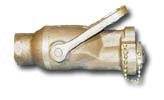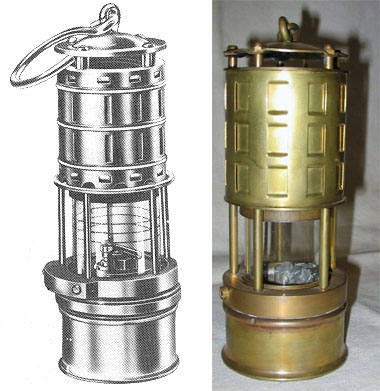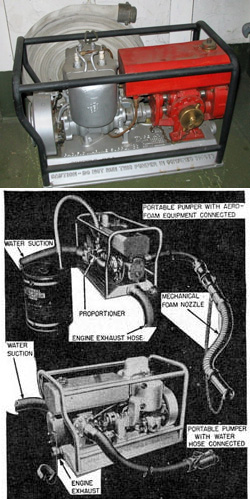| The P-60 pump, also known as
the handy billy, was developed in 1938 and placed into
service prior to WWII. It was a light-weight, compact
firefighting apparatus complete with rotary-type pump,
driven by a two-cycle, two-cylinder gasoline engine. The
pump, engine, fuel tank, and other necessary accessories
were mounted on a common base. All were enclosed in a
tubular steel frame. The complete unit weighed
approximately 106 pounds and could be handled by one
man. Each unit was equipped with an S-type suction foam
proportioner attached to the suction side, which could
be used with a pick-up tube for producing mechanical
foam. It was provided with three 10-foot lengths of
2-inch suction hose, a suction strainer, one 10-foot
length of 1 ½-inch exhaust hose, one mechanical-foam
nozzle and one Navy pick-up unit (NPU). It was important
that the discharge pressure of the handy billy be
maintained at approximately 100 psi at all times. The
pump was designed to deliver 60 gpm at a discharge
pressure of 100 psi when operating at 3,500 rpm. When
operating at pressures in excess of 100 psi, the engine
speed dropped in proportion to the increase in discharge
pressure; conversely, a decrease in discharge pressure
caused the engine to speed up. Engine speeds in excess
of 4,200 rpm caused serious damage to the engine because
of inadequate cooling and lubrication. Loss of pump
suction caused an increase in the engine speed; unless
stopped immediately, the engine could race at
approximately 7,500 rpm, causing serious damage to the
unit. To avoid further damage, the suction hose had to
be airtight, and the end of the suction hose submerged
at all times. The maximum suction lift to be attempted
with the pump was 20 feet. The engine was lubricated by
means of one pint of No. 2190 oil mixed with the
gasoline; it was never operated without first making
sure that the proper amount of lubricating oil was
thoroughly mixed with the gasoline. The one-gallon
gasoline tank ran the pump for approximately one hour. A
spare two-gallon gasoline can was provided, especially
for rescue and assistance details. The exhaust gases
from the handy billy were cooled by the engine cooling
water, then vaporized and emitted out through the
exhaust with the gases as a vapor. This vapor condensed
upon cooling. Operation of the unit with the exhaust
hose elevated in excess of 4 feet above the engine was
not desirable because the condensed vapors contained in
the exhaust hose created back pressure on the engine
exhaust, which could cause the engine to stop. If the
engine did stop, the column of water in the exhaust hose
would run back through the engine and cause serious
damage to the pump. The handy billy could be operated
below decks if the means were provided to convey the
engine’s toxic exhaust gases to an outside atmosphere
and to separate the condensed vapors from the exhaust
gases. The latter was accomplished by employing an empty
5-gallon sheet metal foam can as a water trap in the
exhaust system. A hole was cut in the side of the can
and a nipple was brazed in this hole of such size that
the 1 ½-inch exhaust hose could slip over the nipple.
The hose was clamped over the nipple with a hose clamp,
and the opposite end of the hose connected to the
engine’s exhaust connection. A similar nipple was brazed
in the top of the can, with an exhaust hose clamped onto
the nipple. The opposite end of the hose was placed in
some spot where the gases were exhausted to the outside
of the vessel. Another hole, ¾- or 1-inch diameter, was
cut in the side of the can, approximately 6 inches above
the bottom, and ¾-inch tubing, formed in the shape of an
L, was brazed in place so one end was approximately ½
inch above the inside bottom of the can. In ship wide or
major emergencies, any member of the ship’s company
could have provided assistance in operating the P-60
pump; otherwise pump teams from repair party lockers
operated the pump. The repair lockers with specific P-60
teams in Condition I were 1, 2, and sometimes 3 and 4,
depending on the ship’s class. This team was also used
in rescue and assistance operations when necessary.
After being operated with sea water, the pump was
flushed and drained with fresh water before being
restored. Pumps were generally stowed in the main deck
passageways near a watertight door, because of the
gasoline tank as well as for quick access, safety and to
reduce saltwater spray corrosion. The P-60 pump began to
be phased out in 1970. It was replaced by the new P-250
pump. |




